Can Microdermabrasion Remove Aging Signs?
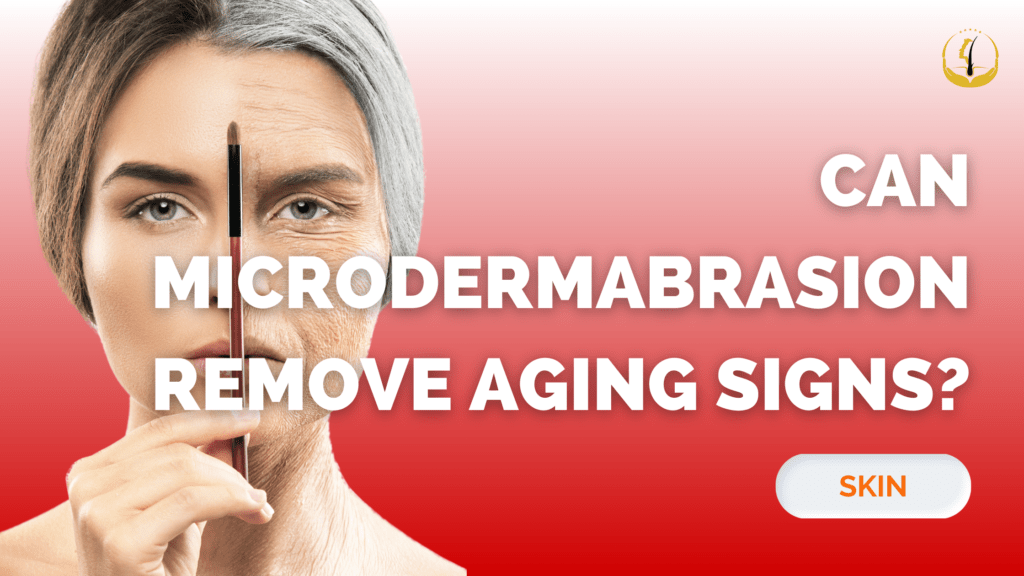
Microdermabrasion, also known as skin polishing, is a minimally abrasive procedure that delicately exfoliates the skin, eliminating the outer layer to address various skin concerns. This non-invasive technique has gained popularity for its ability to treat sun damage, scarring, discoloration, and even stretch marks. But can microdermabrasion truly remove signs of aging? Let’s explore. Understanding the Benefits Microdermabrasion holds multiple benefits, primarily centered around collagen enhancement. This procedure effectively thickens collagen, a crucial protein in the skin responsible for its smooth and tight appearance. As the body ages, collagen production declines, resulting in uneven and loose skin. Microdermabrasion acts as a rejuvenating tool, promoting a more youthful complexion. Ideal Candidates and Limitations Perfect candidates for skin polishing are individuals with minor skin imperfections who understand the procedure’s limitations. Microdermabrasion is mild and non-invasive, making it unsuitable for addressing issues like saggy skin or deep facial folds. Conditions of this nature may require more intensive treatments such as laser skin tightening or a facelift. The Procedure: Safe and Effective Microdermabrasion is a non-surgical, outpatient treatment offering numerous benefits. It diminishes wrinkles, facial lines, and signs of aging, while also reducing the visibility of acne scars and mild scarring. The procedure provides a fresh, glowing, and healthy look to all skin types. Importantly, microdermabrasion is associated with minimal side effects, making it a safe option for patients. Suitable for Sensitive Skin An additional advantage of microdermabrasion is its suitability for delicate and sensitive skin that may react negatively to chemical treatments. Utilizing non-allergenic crystals, this procedure caters to various skin conditions without presenting significant risks. The cost of microdermabrasion varies among clinics but is generally reasonable considering the positive results it delivers. Potential Side Effects and Considerations While microdermabrasion is generally well-tolerated, some patients may experience slight irritation after the treatment. It’s crucial to recognize that individual skin types and health histories differ. Evaluating the benefits on a case-by-case basis ensures that desired results are achieved. Seeking the expertise of a reputable cosmetic surgeon, such as those at GLOJAS, can enhance the likelihood of excellent outcomes from microdermabrasion treatments. Conclusion Microdermabrasion stands as a versatile and effective solution for various skin concerns, offering a pathway to a more youthful and radiant complexion. By understanding its benefits, limitations, and considering individual factors, individuals can make informed decisions about whether microdermabrasion is the right choice for their unique skin needs. To unlock the full potential of microdermabrasion and achieve exceptional results, consulting with a skilled cosmetic surgeon is a pivotal step on the journey to timeless beauty.
Who Should Have Brazilian Butt Lift Surgery?

Modern culture emphasizes the backside of the human body, causing numerous to go to Brazilian butt lifts to accomplish the outstanding back that improves their appearances. It’s essential to be educated before you settle on a Brazilian butt lift. For the individuals who experience that their buttocks area is way small and needs improvement. For those, a female dermatologist nearby may offer a remarkably careful choice to improve your buttocks area making it more comprehensive and more noticeable. The individuals who have participated in the BBL surgery constantly believe their new construction to be enthusiastic, young, and exotic. Anyway, it is essential to find out who is qualified for this sort of Brazilian butt lift surgery, and how beneficial this technique is? What Is a Brazilian Butt Lift? During this surgery, your fat is collected from different pieces of your body through liposuction. Most often, the liposuction will improve the conspicuousness of your backside since it removes belly fat, which overshadows that tummy area. This fat is then filtered and implanted into a few specific areas on the upper pieces of your buttocks area, which will work towards lifting your butts. Who Should Have? Sometimes, a candidate who wishes to undergo this Brazilian butt lift surgery won’t have enough additional fat to perform this procedure. If you are one of those thin individuals who might want to have a more noticeable butt lift, you may need to agree to silicone insertions. However, numerous Brazilian butt lift specialists accept that the surgery, which uses your fat is a considerably advanced choice when contrasted with shaped silicone inserts. What Happens During The Procedure Collecting the Fat: To complete the Brazilian butt lift surgery, your specialist will take helper fat from areas situated on your own body. The most widely recognized benefactor areas are the stomach, the thighs, and the back territory found legitimately over the buttocks area. Purifying the Fat: Just the absolute best of this contributor fat will be utilized to improve your buttocks area, so the fat cells must be isolated and sanitized before they meet all conditions to be re-infused once more into your body. Re-Infusion Process: The microinjection method utilized by a dermatologist near me guarantees that most of the implanted fat will be effectively consumed once again into your body to make your butt lift dream conceivable. The purified fat is infused into a few better places and profundities inside the bum tissue to advance enduring and consistent outcomes. Side Effects and Recovery Time: The greater part of the conceivable results is brief, and most patients recuperate rapidly with rest and recuperation. The most widely recognized results that have been noticed are deadness at the infusion site, alongside wounding and enlargement.
Are There a Number Of Hairs In Your Brush Or Comb?
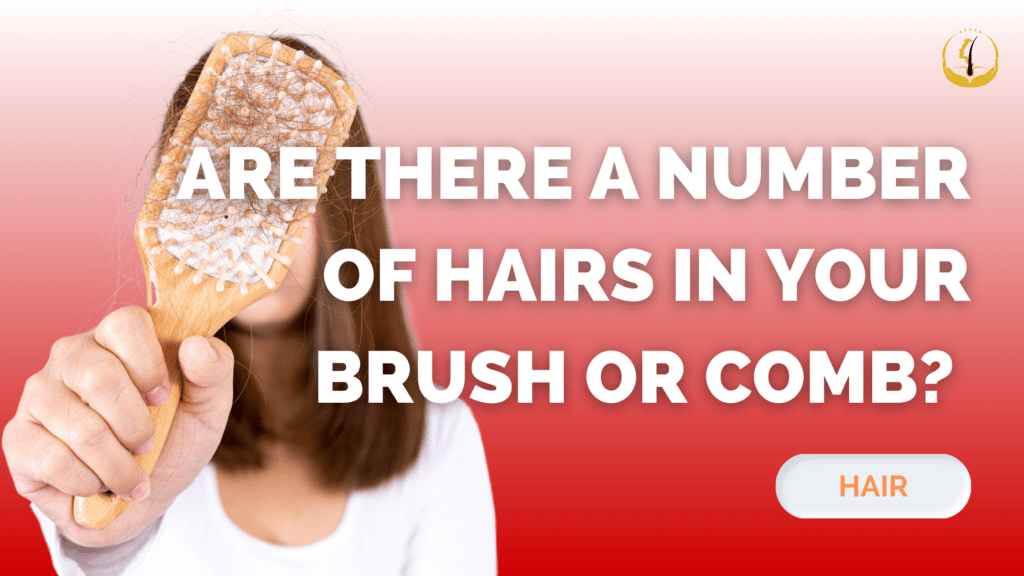
When you comb your hair, are there a number of hairs in your brush or comb? If so, you can consider this as normal. Everyone loses their hair on a daily basis. It can mean the loss of 100 hairs or more each day. If, however, the loss gets more extensive, there is the possibility that you have a problem. What is the best way to find out? One thing you should definitely do is to visit your doctor so he can determine the cause. This is going to be essential to finding out what treatment can be used to stop this hair loss. There are many aspects that the doctor will consider before giving you an answer. For one, he will make sure there are no illnesses that you are suffering from that are causing the loss of hair. Once you start researching, you will find that there are many causes that could be contributing to your hair loss. Stress is one aspect that can cause excessive hair loss. A serious trauma can cause this problem as well. A pregnancy can cause hair loss. Something as simple as ringworm is another reason for losing hair. Thyroid problems are another. Crash diets can cause you to lose significant amounts of hair. Menopause can cause hair loss for women. So, as you can see, there are many reasons that excessive hair can be lost. That is why it is so important to find out the exact cause before trying to treat this problem. We suggest that you get a consultation with one of our GLOJAS Doctors who are experts in their field to identify the right treatment your body needs to achieve your goal. GLOJAS Hair Specialist Clinic provides the best solution-oriented hair transplant with our specialist doctors experts in their fields, treating all of our patients with honest, trustworthy, ethical, and equal service of the highest quality, meeting all the required national and international standards.
Pico Laser and CO2 Laser
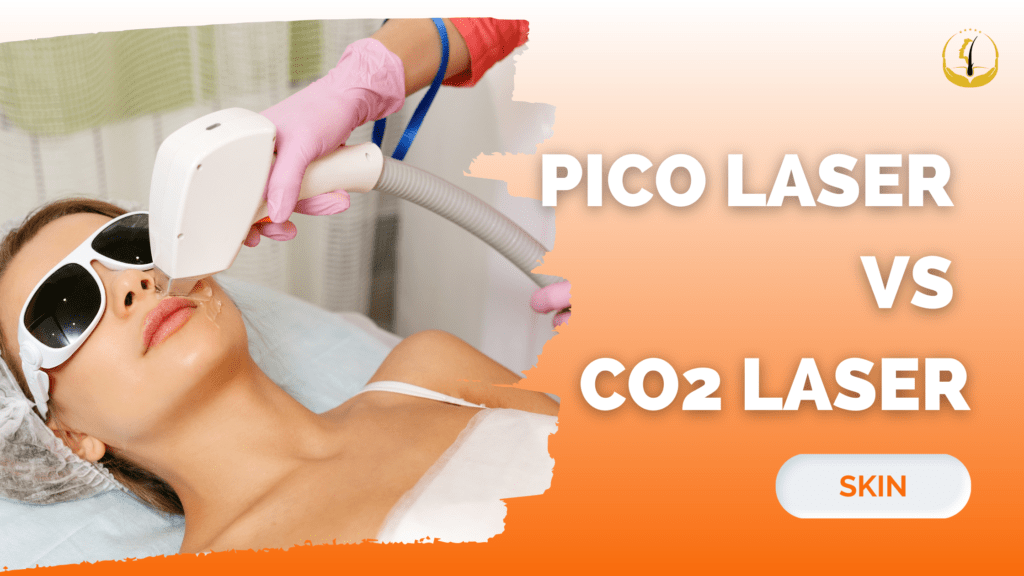
In recent years, advancements in medical aesthetics have introduced a plethora of options for skin rejuvenation and treatment. Among the most popular are Pico lasers and CO2 lasers, two cutting-edge technologies that have revolutionized the field of dermatology. These lasers offer distinct advantages and are tailored to different skin concerns, making them sought-after solutions for individuals seeking to enhance their appearance. Keep reading to learn more about Pico Laser and CO2 Laser technologies, outlining their differences, benefits, and ideal use cases. Pico Laser Pico lasers are a breakthrough in the world of cosmetic dermatology, recognized for their unparalleled precision and versatility. These lasers employ ultra-short bursts of energy, measured in picoseconds, to target specific pigments in the skin. They are renowned for their exceptional ability to address a variety of concerns, including tattoo removal, pigmentation issues, fine lines, and even acne scars. Pico lasers work by delivering rapid pulses of energy that shatter pigment particles into minuscule fragments, allowing the body’s natural processes to eliminate them over time. One of the standout features of Pico lasers is their minimal downtime. Unlike some other laser treatments, Pico lasers cause less damage to surrounding tissues, leading to faster recovery periods. This makes them an attractive option for individuals with busy schedules who wish to undergo treatments without prolonged interruptions. CO2 Laser CO2 lasers, on the other hand, harness the power of carbon dioxide to deliver controlled ablation, or controlled removal of tissue layers. These lasers have long been associated with impressive results in skin resurfacing and rejuvenation. By precisely vaporizing layers of damaged skin, CO2 lasers stimulate collagen production, leading to smoother, tighter, and more youthful skin. They are highly effective in treating deep wrinkles, scars, and severe sun damage. The downtime associated with CO2 laser treatment is typically longer compared to Pico lasers. The procedure involves a deeper level of skin penetration, necessitating a more extended healing process. However, many individuals find that the remarkable results achieved with CO2 lasers make the recovery period well worth it. Comparing Pico Laser and CO2 Laser Precision and Targeting: Pico lasers excel in targeting specific pigments, making them an excellent choice for addressing hyperpigmentation, melasma, and tattoo removal. CO2 lasers, on the other hand, are better suited for overall skin resurfacing and treating larger areas of concern. Downtime and Recovery: Pico lasers offer minimal downtime due to their precise targeting and minimal damage to surrounding tissues. CO2 lasers require a longer recovery period but often yield more dramatic results in terms of skin tightening and resurfacing. Skin Concerns: Pico lasers are versatile and can address a wide range of issues, including pigmentation irregularities, fine lines, and acne scars. CO2 lasers are particularly effective for deep wrinkles, severe sun damage, and scars. Sessions Required: Pico laser treatments often require multiple sessions to achieve optimal results, while CO2 laser treatments may deliver noticeable improvements in a single session. In conclusion, Pico lasers and CO2 lasers stand out as groundbreaking technologies with unique strengths. Pico lasers offer precision and minimal downtime, making them ideal for targeting specific pigment-related concerns. CO2 lasers, with their controlled ablation and collagen-stimulating effects, excel in resurfacing and rejuvenating the skin on a deeper level. The choice between Pico laser and CO2 laser ultimately depends on the individual’s specific skin concerns, desired outcomes, and tolerance for downtime. Consulting with a qualified dermatologist is crucial to determine the most suitable treatment approach and achieve the desired results. At Glojas, we welcome clients to reach out to us directly to schedule a free initial consultation. We offer guidance and valuable insights on how best to address your specific challenges. Let us assist you in navigating your journey with confidence and clarity.
Breast Implant Incision Healing
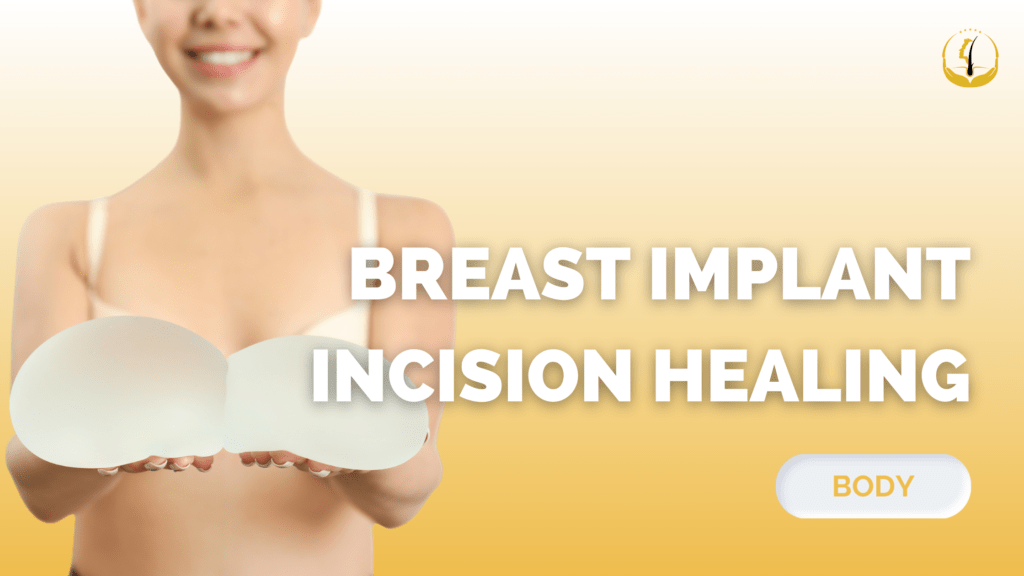
Undergoing breast implant surgery can be a transformative experience, boosting self-confidence and enhancing one’s self-image. However, the healing process after breast augmentation involves more than just achieving the desired physical appearance. Scar healing is a crucial aspect of post-operative recovery, and knowing how to facilitate optimal healing can contribute to achieving the best possible outcomes. In this article, we will explore various strategies and techniques to promote effective breast implant scar healing, empowering individuals to make informed decisions and take proactive steps towards their recovery. Understanding Breast Implant Scarring Breast implant surgery, also known as augmentation mammoplasty, involves the insertion of implants to enhance the size and shape of the breasts. Like any surgical procedure, it results in scarring as the body’s natural response to tissue trauma. Proper scar healing plays a pivotal role in achieving inconspicuous and aesthetically pleasing results. Follow Post-Operative Care Instructions The first step to promoting effective scar healing is to diligently follow the post-operative care instructions provided by your surgeon. These instructions are tailored to your specific case and are designed to optimize healing. Adhering to guidelines regarding wound care, medications, and physical activity restrictions can significantly impact the outcome. Maintain a Healthy Lifestyle A balanced diet rich in vitamins, minerals, and protein is essential for optimal scar healing. Nutrients like vitamin C and zinc play a crucial role in collagen production, which is vital for wound healing. Additionally, staying hydrated and avoiding smoking and excessive alcohol consumption can contribute to improved tissue repair. Gentle Scar Massage Scar massage is a simple technique that can help break down scar tissue, improve blood circulation, and promote collagen remodeling. Begin scar massage once your surgeon gives you the green light, usually a few weeks after surgery. Gently massaging the scar with clean fingers in a circular motion can gradually soften and flatten the scar over time. Silicone Scar Sheets Silicone scar sheets are adhesive sheets that are placed over the incision site. They create a protective barrier, hydrate the skin, and promote a favorable healing environment. These sheets are available over-the-counter and can be an effective and convenient option for managing scars. Topical Scar Creams and Gels There are various over-the-counter scar creams and gels formulated to improve scar appearance. Ingredients like vitamin E, aloe vera, and onion extract have been shown to have potential benefits. Consult your surgeon before using any products to ensure they are safe and suitable for your healing process. Embrace Sun Protection Exposure to the sun’s harmful ultraviolet (UV) rays can cause scars to become discolored and more noticeable. Always protect your healing scars from the sun by wearing clothing that covers the area or applying a broad-spectrum sunscreen with at least SPF 30. Patience and Time Scar healing is a gradual process that requires patience. Scars typically go through various stages of healing, including redness, itching, and eventual fading. It’s essential to understand that complete scar maturation may take up to a year or more. Breast implant scar healing is a critical aspect of the overall recovery journey after augmentation mammoplasty. By following proper post-operative care instructions, adopting a healthy lifestyle, and utilizing various scar management techniques, individuals can contribute to achieving the best possible outcome in terms of scar appearance. Remember that every individual’s healing process is unique, and consulting with your surgeon regularly is essential to monitor progress and address any concerns. As you embark on your breast implant journey, incorporating these strategies can empower you to take control of your recovery and embrace the positive changes that lie ahead. Click the link to learn more about breast implant: *Link this blog to “Breast Implant Rupture” At Glojas, we welcome clients to reach out to us directly to schedule a free initial consultation. We offer guidance and valuable insights on how best to address your specific challenges. Let us assist you in navigating your journey with confidence and clarity.
Benefits of SMART PRP for Hair Loss
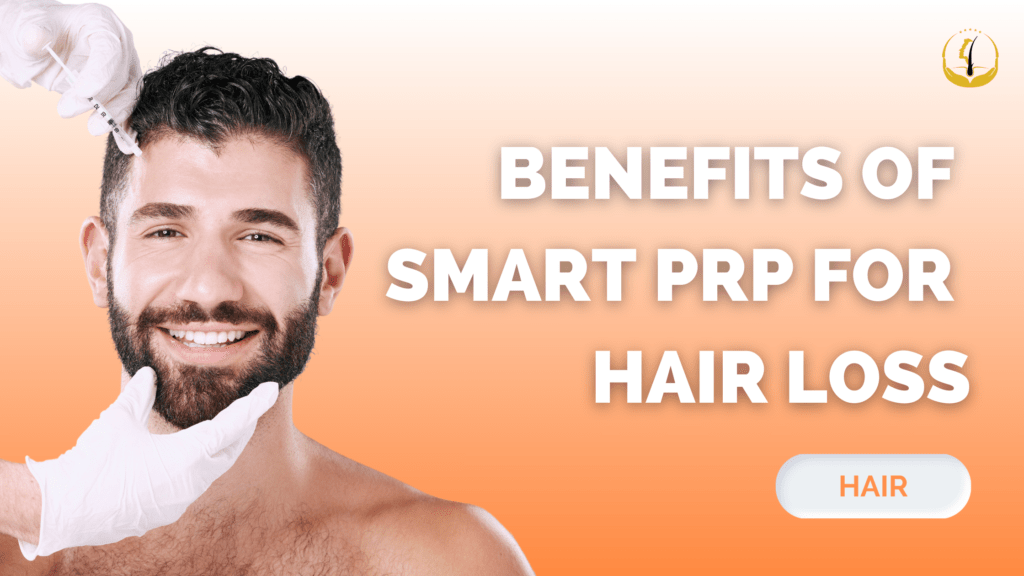
Hair loss is a prevalent concern impacting millions worldwide, often causing a dent in confidence and self-esteem. As an innovative solution, SMART™ Platelet-Rich Plasma (PRP) has emerged, promising a natural and effective alternative to more invasive treatments. In this exploration, we delve into the science behind SMART™ PRP and its potential as a game-changer in the battle against hair thinning. SMART™ Platelet-Rich Plasma (SMART™ PRP) SMART™ Platelet-Rich Plasma, exclusive to GLOJAS, is a cutting-edge treatment utilizing the body’s natural healing mechanisms to promote hair growth. The procedure involves drawing a small blood sample, centrifuging it to extract platelet-rich plasma, and injecting the concentrated SMART™ PRP into the scalp. Rich in growth factors and proteins, platelets play a pivotal role in tissue repair and regeneration. The Science Behind SMART™ Platelet-Rich Plasma for Hair Loss PRP therapy capitalizes on platelets’ ability to stimulate hair follicles, extend the hair growth phase, and induce new hair follicle formation. Growth factors in PRP promote angiogenesis, fostering the formation of new blood vessels around hair follicles, delivering essential nutrients and oxygen. Additionally, SMART™ PRP aids in reducing inflammation, a known contributor to hair loss. Advantages of SMART™ Platelet-Rich Plasma for Hair Loss SMART™ PRP therapy presents a non-invasive and promising solution for addressing hair loss. By leveraging the regenerative properties of platelets from a patient’s own blood, SMART™ PRP stimulates hair follicles, encourages cellular rejuvenation, and enhances blood circulation to the scalp. Administered through micro-injections, SMART™ PRP releases growth factors initiating natural hair growth, slowing down hair loss progression. This innovative treatment is a safe, minimally discomforting option for countering hair thinning, pattern baldness, and utilizing the body’s innate healing mechanisms for hair restoration. Incorporating SMART™ Platelet-Rich Plasma into Your Hair Loss Regimen For those considering SMART™ PRP therapy, consulting with GLOJAS experts is crucial. A personalized treatment plan, considering individual conditions and needs, typically involves sessions spaced several weeks apart to achieve optimal results. SMART™ Platelet-Rich Plasma therapy signifies a groundbreaking advancement in hair restoration. By tapping into the body’s natural healing mechanisms, it offers a safe and effective solution for individuals grappling with hair loss. As scientific exploration continues, SMART™ PRP therapy holds promise not only for hair restoration but also for rejuvenating self-confidence in those experiencing thinning hair. If you seek a natural and minimally invasive approach to hair restoration, SMART™ PRP therapy could be the transformative solution you’ve been searching for. Connect with GLOJAS today for a comprehensive consultation.
Can Hair Growth Oil Reverse Hair Loss?
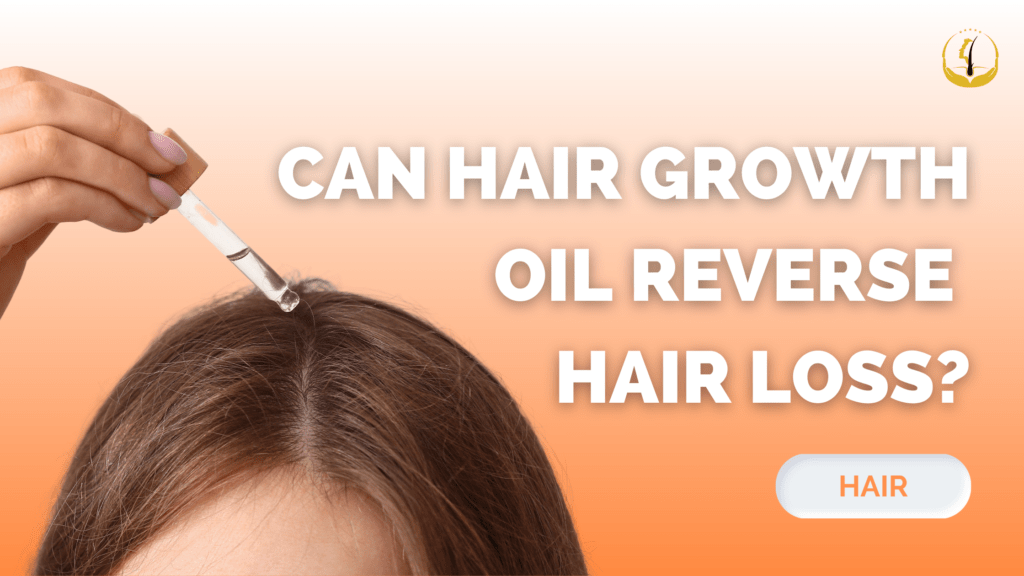
The quest for healthy, thick hair has led many individuals down a winding path of hair care products and remedies. Among the most touted solutions is hair growth oil, often marketed as a miraculous elixir that can reverse hair loss and promote regrowth. But does this seemingly magical oil really live up to its claims? Without any further delay, let’s explore the science behind hair loss, the potential benefits of hair growth oils, and whether they can genuinely reverse hair loss. What is Hair Loss? Before we get deeper into the efficacy of hair growth oils, it’s crucial to understand the root causes of hair loss. Hair loss, medically known as alopecia, can be attributed to a variety of factors, including genetics, hormonal imbalances, medical conditions, certain medications, and lifestyle choices. The most common form of hair loss is androgenetic alopecia, often referred to as male or female pattern baldness, which is influenced by genetic and hormonal factors. The Role of Hair Growth Oils in Hair Loss Hair growth oils typically contain a blend of natural and essential oils that are believed to nourish the scalp, strengthen hair follicles, and stimulate hair growth. These oils often include ingredients like coconut oil, castor oil, jojoba oil, and argan oil, each with its own purported benefits for hair health. Proponents of hair growth oils argue that these natural ingredients can help increase blood circulation to the scalp, deliver essential nutrients to hair follicles, and reduce inflammation, all of which are thought to contribute to healthier hair and potential regrowth. Natural vs. Pharmaceutical Approaches of Hair Growth Oils in Hair Loss While natural ingredients found in hair growth oils may offer some benefits, it’s important to note that the concentrations and mechanisms of action may differ from pharmaceutical solutions. Minoxidil, for instance, has undergone rigorous testing and clinical trials to substantiate its effectiveness, while the evidence for hair growth oils remains largely anecdotal. While hair growth oils may offer some benefits for hair health, it’s crucial to approach the claims with skepticism. The scientific evidence supporting the idea that hair growth oils can reverse hair loss is currently lacking. Hair loss is a complex issue influenced by various factors, and no single product or remedy can guarantee a complete reversal of this process. Maintaining a healthy lifestyle, including a balanced diet, proper hair care practices, and, if necessary, medical treatments prescribed by healthcare professionals, remains the most effective approach to addressing hair loss. There’s no denying that hair growth oils have captured the attention of many seeking a remedy for their thinning locks. While these oils may offer certain benefits for hair health. As we continue to unravel the complexities of hair growth and loss, it’s essential to approach such remedies with realistic expectations and consult with GLOJAS professionals for comprehensive and evidence-based solutions. Click the link to learn more about breast implant: “Can You Inherit the Hair Loss Condition?” At Glojas, we welcome clients to reach out to us directly to schedule a free initial consultation. We offer guidance and valuable insights on how best to address your specific challenges. Let us assist you in navigating your journey with confidence and clarity.
What Causes Varicose Veins and How to Get Rid of it?
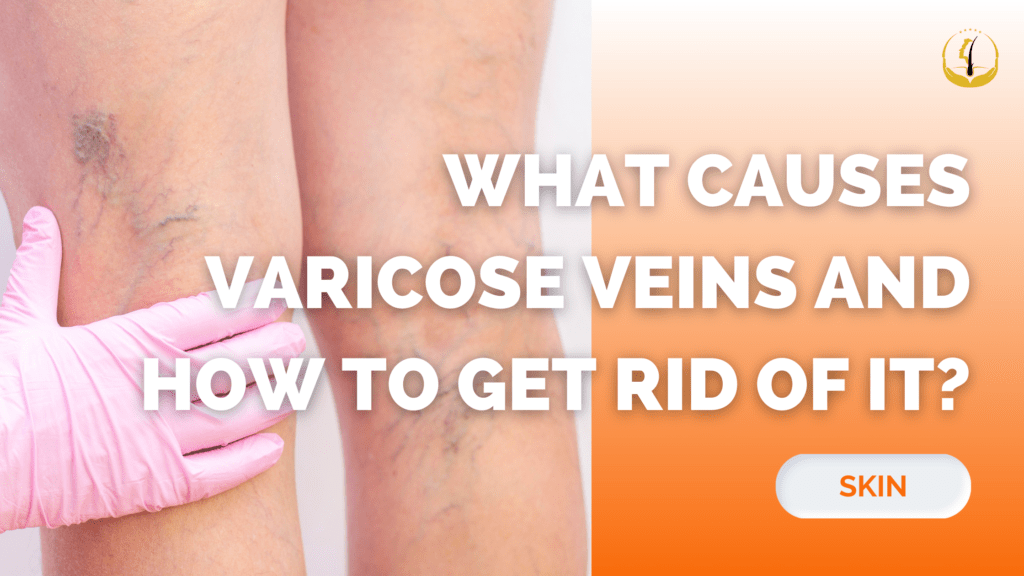
Varicose veins, those twisted and enlarged veins often found on the lower legs, not only impact appearance. It can also lead to discomfort and complications such as blood clots or open sores. In this comprehensive guide, we’ll explore the causes and discuss effective ways to manage and reduce their appearance. What Causes Varicose Veins? Varicose and spider veins are essentially damaged veins. The veins in our bodies contain tiny one-way valves that allow blood to flow in one direction and prevent it from backtracking. When the walls of these veins become stretched and lose elasticity, the valves weaken, leading to improper functioning. This can cause blood to leak and flow backward, resulting in the enlargement and swelling of veins. Several factors contribute to the development of varicose veins: Gender: Women are more susceptible due to hormonal influences that relax vein walls, making valves prone to leakage. Age: As we age, veins naturally lose elasticity, and the valves become less effective. Weight: Being overweight increases pressure on veins, contributing to their deterioration. Occupation: Jobs that involve prolonged standing can strain veins. Pregnancy: Increased blood volume and hormonal changes during pregnancy can intensify the risk of varicose veins. Managing Varicose Veins at Home While there is no cure, adopting certain practices at home can help improve blood circulation and reduce discomfort: Exercise: Incorporate regular physical activity into your routine to promote healthy blood flow. Leg Elevation: Elevate your legs whenever possible to alleviate pressure on veins. Movement Breaks: If your job involves prolonged sitting, take breaks every 30 minutes to walk and stretch. Avoid Hot Baths: Refrain from extended sessions in hot baths, as excessive heat can exacerbate vein issues. Compression Stockings Wearing compression stockings is a common and effective method to manage varicose veins. These stockings exert steady pressure, aiding blood movement back to the heart and reducing swelling. Consulting with a dermatologist ensures proper sizing and pressure recommendations for optimal results. Laser Treatment Laser treatment represents a non-invasive option for addressing it. During the procedure, the laser is directed at the affected veins. While small spider veins may disappear immediately, larger ones may darken initially and gradually fade over 1 to 3 months. Multiple sessions, usually three or more, may be required for complete clearing. Choosing a reputable dermatologist is crucial for successful leg vein treatment. GLOJAS, with its advancements in non-invasive and safe treatments, stands out as a reliable option for reducing the appearance. Their experienced professionals can guide you through the process and recommend personalized treatment plans based on your unique needs. In conclusion, while varicose veins may not have a definitive cure, effective management strategies and advanced treatments offered by experts like GLOJAS can significantly improve the condition and enhance overall well-being.
Intriguing Information About Body Contouring
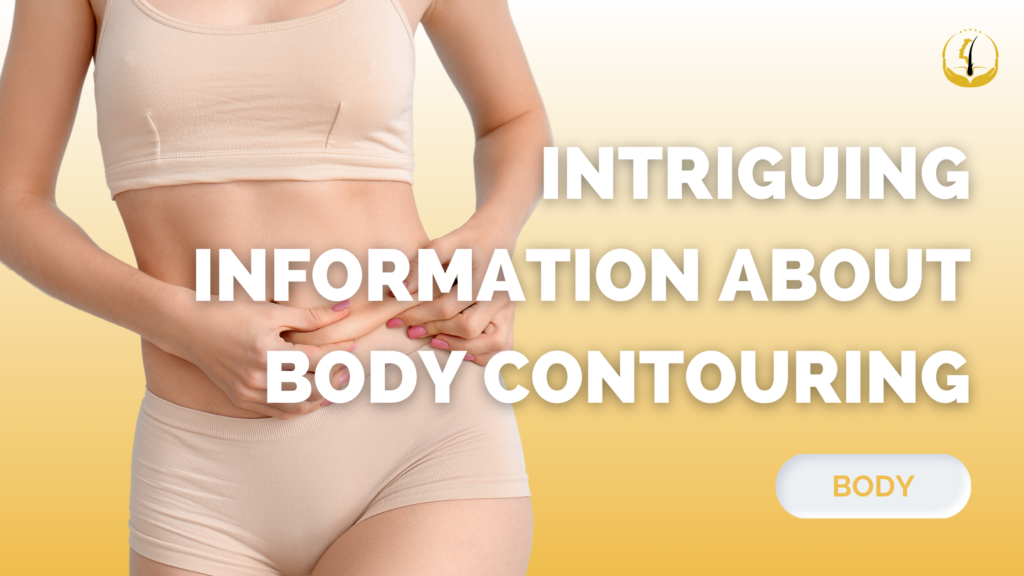
Body contouring is a process of removing excess sagging skin and fat while improving the shape of the underlying tissue! While the process of body contouring includes procedures that eliminate or reduce excess skin and fat in a variety of places like the torso, upper arms, chest, and thighs! Moreover, body contouring eliminates unwanted fatty areas and extra folds of skin. While liposuction and excision are the most general methods used to shape the body. These body contouring procedures are performed in order to reform body structures to develop physical appearance and confidence. If you too want to develop physical appearance and confidence, then you can get body contouring from GLOJAS clinic at much affordable rates! These hazards include some pain, swelling and bruising are natural for two or three weeks after surgery. Many patients lose immense weight in a short span of time and the skin does not preserve its shape, parting the patient with excess and baggy skin. Moreover, patients lose various amounts of body fat before the weight loss levels which makes them thin, moderate or still heavy. Body contouring methods work properly on smaller patients who had gastric bypass surgery while with larger people habitually had evident blemishes above and below the underwear region after surgery! Although, you can have one or more methods to accomplish your objectives for a young-looking and contoured body. Body contouring goals can be attained in one surgical session or may be more carefully performed in phases that can be depended upon the overall fitness. Developments to your body’s figure and overall image may be obtained by condensing excess fat and tissue. Further, body contouring can be maintained in shape by taking integrative cosmetic procedures at GLOJAS clinic.
How Much Should I Pay For A Hair Transplant?
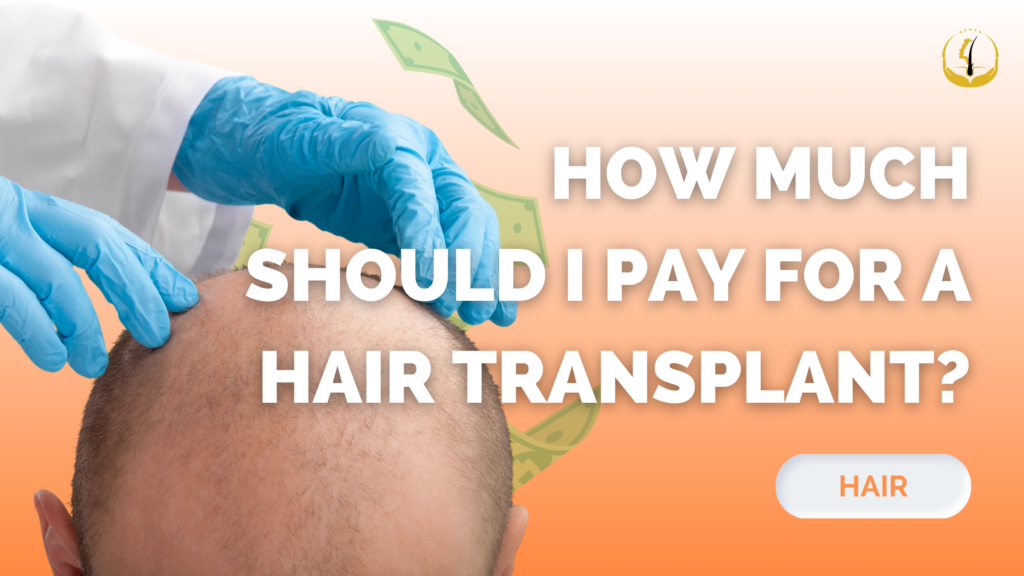
This is an important question that comes to the mind of most hair loss patients. Thinking about cost is not wrong since it is quite natural if one desires to make an affordable deal. However, things are different when you are looking for a hair specialist. While you get the treatment for any health issue, it means you need perfect results and you have to pay for the same. Obviously, it is not like buying your new car or dress. This is the matter of your health and if we talk about hair transplant, your look is also involved in the decision-making process. Conclusively, you have to consider the quality and safety before cost to make a good decision. Are cheap clinics disadvantageous? This is not a rule. Maybe you find a cheap and effective clinic but your aim should be quality treatment but not cheap treatment. While a clinic makes a claim to provide a cheap cost, you have to ask about other facilities they provide. Moreover, an extremely cheap cost is suspicious. Can you get gold at the price of bronze? Of course not! Thus, affordability is OK but you cannot rely on impractical claims. While you try to find out a clinic for hair loss treatment, you need to consider the following cost factors as well. The bald area on the scalp. A larger area on the scalp clearly indicates that you will get your treatment at a higher cost. Similarly, only a restoring hairline will be comparatively cheaper for the patient. You have to pay for every graft and every graft will increase the total cost after the treatment. Therefore, the surgeon has to count the grafts to determine the full cost. A more experienced and qualified surgeon will ask for more bucks after the treatment. If you reside in a metro city, the clinics in your city will be costlier for you. Clinics in a small city are comparatively cheaper. Your medicated shampoo, lotion, antibiotics, and other medicines might increase your bill after the treatment. Sub-procedures. Sometimes, the surgeon performs treatments like PRP to increase the effectiveness of the hair transplant surgery. Surely, PRP will increase the total cost. As you see, hair loss clinics have to consider several factors to determine the final cost. Different affordable clinics provide different offers to cut the total cost including low-interest rates, installments, seasonal offers, reduced fees for the initial consultation, free consultation on a specific day in a week, etc. If you want a reasonable cost for a hair transplant the GLOJAS Hair Specialist Clinic can fulfill your objectives. GLOJAS Hair Specialist clinic has developed a team of doctors and experts who have full mastery of hair transplants and other cosmetic procedures.
